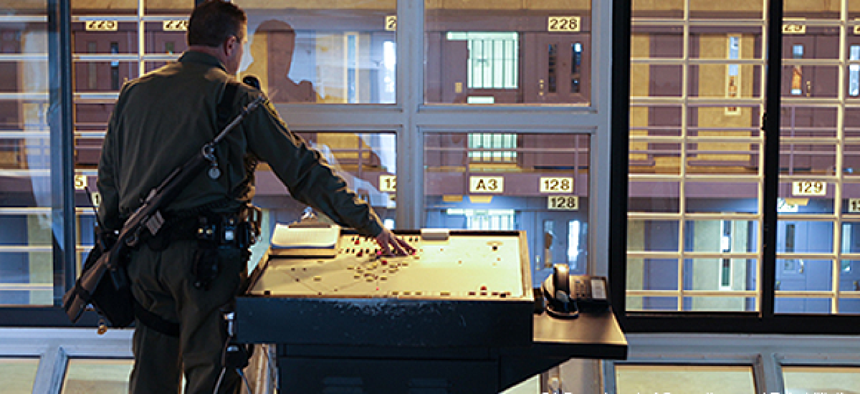Across California prisons, inmates now tracked online


Connecting state and local government leaders
The California Department of Corrections digitized all inmate files and set up a fully automated transaction processing system.
With a prison population spread across 34 separate facilities, it’s difficult under the best of circumstances to keep track of inmates’ whereabouts, not to mention their appointments, special circumstances and sentence changes. For decades, California prisons managed this tracking manually, adding to paper files that were started the day inmates began their sentences.
Project at a glance
Project: Strategic Offender Management System, an integrated system that includes electronic records management, universal health records, identity management and reporting
Office: California Department of Corrections and Rehabilitation
Technology used: Marquis Software’s Electronic Offender Management Information System, Oracle transaction processing and EMC Captiva document capture and management, along with technology from Cisco, VMware and Adobe
Time To Implementation: Two years from contract award to implementation; an additional 2.5 years for full functionality
Before: Paper files and antiquated systems made it virtually impossible to track inmate data.
After: SOMS provides secure access to accurate and complete offender information. It has eliminated manual processes, enabled real-time data, and saved the state millions of dollars.
Over time, an inmate’s documents and files could grow to fill several boxes, depending on the sentence. There were some automated systems, but they were decades old and provided very limited functionality. In even the best-managed of the Department’s systems, data was often 24 hours out of date, which affected the accuracy of department’s reporting and access.
In 2009, the California Department of Corrections and Rehabilitation made the decision to completely overhaul the process, first by digitizing all existing paper files and then by setting up a fully automated transaction processing system.
“When inmates enters the prison system now, it’s all done online,like checking into a hotel,” said Russ Nichols, project director of the Strategic Offender Management System (SOMS). “They are registered so that whatever action is taken on them next can be done on that inmate’s electronic file, from noting what type of special needs the inmate has to whether he is at the right place at the right time and what services he’s scheduled for.”
Inmate movement and tracking are an important part of the system. Before SOMS went live, it wasn’t unusual for inmates to be double-scheduled for activities, such as an anger management class and a dentist visit. With SOMS, each inmate’s calendar is visible to all prison staff and inmates get the services they need.
To get the project started, the department hired HP as the systems integrator, directed by Nichols and his team of business experts. Together, they figured out how to customize Marquis Software’s Electronic Offender Management Information System (eOMIS) to meet California’s unique requirements. For example, the standard eOMIS sentence calculations didn’t take into effect how attending programs like anger management could reduce an inmate’s sentence, or how bad behavior could lengthen it.
The bulk of the $400 million project was completed in 2011 and rolled out to all 34 prisons. Since then, the team has continued to add functionality. For instance, each team recently completed a program that classifies inmates by security level, services required and potential jobs and education needs . Next up is a module that will support 60,000 parolees by making their information accessible to parole officers and allowing them to add to the files.
Today, the system supports more than 53,000 users and processes an average of 84,800 visitors, 116,500 external movements, 27,500 reception center intakes, 99,400 bed assignments, 1,255 master count transactions and 325,000 scheduling appointments each month.
In addition to reducing paper, providing more accurate reporting and providing real-time data, the system is saving the state about $15 million annually and has allowed the department to reduce its workforce by 160. The system has been so successful it has drawn interest from several states and the federal prison system.
NEXT STORY: Knight Cities Challenge Seeks Innovative Ideas




